#When Should An EMG Be Performed
Explore tagged Tumblr posts
Text
When Is Electromyography Done |How To Make EMG Less Painful?

When Should An EMG Be Performed? Electromyography (EMG) is a essential diagnostic tool that helps neurologists determine the fitness of muscle mass and the nerve cells that manage them.
This advanced check is usually encouraged even as a affected person reveals signs together with muscle weak point, tingling, or continual pain that cannot be with out issues described.
At Big Apollo Spectra Hospital, Patna, our neurology department is ready with current-day EMG centers and neurology specialist near me to offer correct diagnoses and effective treatment plans.
Renowned for its terrific care and precision, we are committed to helping sufferers regain their extremely good of lifestyles.
What Is Electromyography Used To Diagnose?
EMG measures the electrical pastime of muscle companies each at relaxation and inside the course of contraction.
This EMG Test Painful is executed the use of a specialised device that information electrical signals through electrodes, both located on the pores and skin or inserted immediately into the muscle with tremendous needles.
What Happens If EMG Is Abnormal? By analyzing the forms of the ones alerts, neurologists in Patna can determine whether or not the muscle issues stem from a nerve disorder, muscle situation, or a hassle with the verbal exchange among the nerve and muscle.
Common Reasons for Electromyography
Doctors might also endorse EMG for numerous reasons, at the side of:
Muscle Weakness
Persistent vulnerable factor, specially if it's far localized or unexplained, may additionally moreover require an EMG to uncover the inspiration reason.
Numbness or Tingling
Sensations of tingling or numbness inside the hands, legs, or unique parts of the body can also indicate conditions like peripheral neuropathy or radiculopathy, which EMG can help diagnose.
Unexplained Muscle Pain
If muscle ache does not solve with fashionable remedies or lacks an obvious cause, EMG can reveal underlying issues inclusive of myopathy or neuromuscular troubles.
Muscle Twitching or Spasms
Frequent involuntary muscle movements might possibly sign conditions like motor neuron ailments or muscle dystrophies, for which EMG provides precious diagnostic facts.
What Conditions Require EMG Testing?
Peripheral Neuropathy
EMG can detect peripheral nerve damage caused by diabetes or injuries.
Radiculopathy
Issues stemming from pinched nerves inside the spinal column, typically visible in herniated discs, are detectable thru this check.
Carpal Tunnel Syndrome
EMG is instrumental in diagnosing this situation, in which the median nerve inside the wrist is compressed, leading to pain or numbness.
Muscle Disorders
Conditions together with muscular dystrophy or polymyositis are identified the usage of EMG to assess muscle fitness.
Nerve Disorders
Conditions such as ALS or Guillain-Barré syndrome often necessitate EMG for a thorough nerve assessment.
Neuromuscular Junction Disorders
EMG can also be used to diagnose disorders like myasthenia gravis, which occur when nerve signals do not properly reach muscle tissues.
What to Expect During an EMG Test?
An EMG take a look at is normally executed in factors:
Nerve Conduction Study (NCS)
Electrodes are placed on the skin to activate the nerves, and the Severe Pain After EMG Test is observed. This determines the functionality of the nerves to send electric alerts effectively.
Needle Electrode Examination
Fine needle electrodes are inserted into the muscle to at once degree its electric powered hobby.
How To Make EMG Less Painful? While those strategies may additionally motive minor soreness, they will be usually nicely-tolerated and offer important information for correct analysis.
When Should You Consider EMG?
EMG is recommended when signs and symptoms persist in spite of traditional treatments or while Neurology Doctor in Patna suspect important underlying neurological or muscular conditions.
What Happens When EMG Is Positive? Early analysis via EMG can facilitate spark off and powerful remedy, potentially preventing further headaches.
At Big Apollo Spectra Hospital, Patna, we apprehend the significance of well timed and precise diagnoses in treating neurological situations.
Trust us for compassionate, complete EMG Test Cost neurology offerings to manual you to your adventure to better health.
#When Should An EMG Be Performed#What Conditions Require EMG Testing#What Is Electromyography Used To Diagnose#What Happens When EMG Is Positive#EMG Test On Legs#EMG Test Painful#Positive EMG Test Results#EMG Test Cost#What Happens If EMG Is Abnormal
0 notes
Text
EMG Nerve Test – What It Is, How It Works & Why You Need It
The health of your nervous system plays a crucial role in your overall well-being. When nerve damage or dysfunction occurs, it can lead to a variety of uncomfortable and debilitating symptoms, including pain, weakness, or numbness. Understanding how your nervous system functions is key to diagnosing and treating many conditions. One of the most effective diagnostic tools available for evaluating nerve and muscle function is the Emg Nerve Test. In this blog, we will explore what an EMG nerve test is, how it works, and why it may be essential for your health.

What is an EMG Nerve Test?
An EMG nerve test, or electromyography, is a medical procedure that measures the electrical activity in muscles and nerves. It is used to evaluate the function of the muscles and the nerve cells that control them. This test helps healthcare professionals diagnose a wide range of neuromuscular disorders by assessing the electrical impulses produced by muscles at rest and during contraction.
The nerve test EMG typically involves inserting a thin needle electrode into a muscle to record the electrical activity. The information gathered from the test can help identify muscle or nerve disorders, such as neuropathies, muscle diseases, and conditions affecting the spinal cord.
How Does an EMG Nerve Test Work?
During a nerve testing EMG procedure, a healthcare professional uses a needle electrode, which is inserted into specific muscles to measure electrical activity. The test is often performed in two parts:
Needle Electromyography (EMG): In this part of the test, the needle is inserted into the muscle to measure the electrical activity of the muscle fibers. The needle detects electrical signals when the muscle contracts and when it is at rest. These signals are then displayed on a screen, providing valuable information about the muscle's health and function.
Nerve Conduction Study (NCS): In addition to the needle EMG, the healthcare provider may use surface electrodes placed on the skin to send small electrical impulses through the nerves. The test measures how fast and efficiently the electrical impulses travel through the nerves, helping identify nerve damage or dysfunction.
The procedure is typically done in a medical office and can take anywhere from 30 minutes to an hour, depending on the number of muscles and nerves being tested. While the test can cause some discomfort, most patients find the procedure tolerable.
What Conditions Can an EMG Nerve Test Diagnose?
An EMG nerve test is used to diagnose various conditions that affect the nerves and muscles. Some of the most common conditions include:
Nerve Damage or Injury: The nerve testing EMG is highly effective in diagnosing nerve damage, whether due to compression, inflammation, or injury. Conditions such as carpal tunnel syndrome, sciatica, and peripheral neuropathy are frequently evaluated using EMG tests.
Muscle Disorders: EMG is also helpful in diagnosing muscle disorders, such as muscular dystrophy, polymyositis, and muscle strains. By examining the electrical signals in the muscles, the test can detect abnormalities in muscle function that may be indicative of a muscle disease.
Neurological Disorders: The EMG nerve test can help identify neurological disorders that affect nerve signaling, such as amyotrophic lateral sclerosis (ALS), also known as Lou Gehrig’s disease. This condition causes nerve degeneration and muscle weakness, and EMG can be crucial in its diagnosis.
Spinal Disorders: If there is suspected nerve compression or damage in the spine, an EMG test may be used to help diagnose conditions like herniated discs, spinal stenosis, or nerve root compression.
Chronic Pain Syndromes: For individuals experiencing unexplained chronic pain, especially in the limbs, an EMG nerve test can help identify the source of the discomfort by pinpointing nerve or muscle abnormalities.
Why Should You Get an EMG Nerve Test?
There are several reasons why you might need a nerve test EMG. Here are some of the primary reasons why this test is essential:
Accurate Diagnosis of Nerve and Muscle Conditions: The EMG nerve test provides a detailed and accurate assessment of how your muscles and nerves are functioning. This can lead to a precise diagnosis, allowing for more effective treatment options. Whether you're experiencing unexplained pain, numbness, or weakness, the EMG test can help identify the underlying cause.
Early Detection of Neurological Disorders: Some neurological conditions can be difficult to diagnose in the early stages, as symptoms may be mild or intermittent. The nerve testing EMG can detect abnormalities in nerve and muscle function before more severe symptoms arise, allowing for earlier intervention and better management of the condition.
Monitoring Disease Progression: If you have already been diagnosed with a neurological or muscular condition, an EMG nerve test can be used to monitor the progression of the disease. It helps doctors assess how the disease is affecting the muscles and nerves over time and adjust the treatment plan accordingly.
Determining the Cause of Pain or Weakness: If you experience unexplained pain, weakness, or tingling sensations, an EMG nerve test can help identify whether the source of the problem is nerve-related or muscular. This is particularly helpful in cases where the cause of symptoms is unclear and requires further investigation.
Evaluating Treatment Effectiveness: For patients who are undergoing treatment for nerve or muscle conditions, the nerve test EMG can help assess whether the treatment is working effectively. If the electrical activity in the muscles improves or stabilizes over time, it can indicate that the treatment is having a positive impact.
What to Expect During an EMG Nerve Test
Before the nerve testing EMG, your doctor will explain the procedure and answer any questions you might have. During the test, you may be asked to relax or contract certain muscles. The healthcare professional will insert the needle electrode into specific muscles to measure their electrical activity. Although the needle may cause some discomfort, the test is generally well-tolerated.
After the test, you may experience some muscle soreness or bruising around the area where the needle was inserted, but these side effects typically subside within a few days. Your doctor will discuss the results of the test with you and determine the next steps based on the findings.
Why Choose Us for Your EMG Nerve Test?
At Neurological Medicine, P.A., we specialize in providing comprehensive diagnostic services, including the EMG nerve test, to help you understand the health of your nervous system. Our experienced team of professionals uses the latest technology to ensure accurate and reliable results. We are dedicated to helping you achieve optimal health by providing personalized care and expert guidance.
If you are experiencing symptoms related to nerve or muscle dysfunction, contact us today to schedule an appointment for a detailed evaluation. We are here to help you take control of your health and get the answers you need.
0 notes
Link
0 notes
Text
Mumbai’s Leading Neurologists: Finding The Perfect Fit For Your Health
When it comes to neurological health, finding the right specialist is essential for accurate diagnosis and effective treatment. A Mumbai neurologist is trained to diagnose and manage disorders related to the brain, spinal cord, nerves, and muscles. From chronic headaches and migraines to complex conditions like epilepsy and Parkinson's disease, a skilled neurologist doctor in Mumbai can guide you through your health journey with expertise and compassion.
Why You Should Consult a Neurologist in Mumbai
Neurologists are doctors who specialize in the treatment of disorders of the nervous system. Some of the most common conditions that a neurologist in Mumbai can help you with include:
Migraines and Chronic Headaches
Epilepsy and Seizures
Parkinson's Disease
Multiple Sclerosis (MS)
Stroke and Cerebrovascular Disorders
Dementia and Alzheimer's Disease
Peripheral Neuropathy
Spinal Cord Disorders
If you are experiencing persistent symptoms such as tingling, weakness, coordination issues, or memory problems, consulting a neurologist doctor in Mumbai can provide insight into your condition and help you understand the treatment options available to manage your symptoms.
Key Qualities to Look for in a Mumbai Neurologist
Finding the best neurologist in Mumbai for your needs can make a significant difference in your health journey. Here are some important qualities to consider:
Experience and SpecializationNeurology is a complex field, and the best neurologist doctor in Mumbai will have extensive experience with various neurological conditions. Some neurologists specialize in particular areas, such as epilepsy, stroke, or neurodegenerative diseases. Depending on your symptoms, it may be helpful to find a neurologist who has specialized expertise in your specific condition.
Access to Advanced Diagnostic ToolsAccurate diagnosis is crucial for effective treatment, and a reputable Mumbai neurologist will have access to state-of-the-art diagnostic tools. These may include imaging tests like MRI and CT scans, as well as other advanced techniques like EEG (electroencephalogram) for assessing brain activity and EMG (electromyography) for diagnosing muscle and nerve disorders.
Patient-Centered CareThe best neurologist doctor in Mumbai will listen to your concerns, answer your questions, and develop a treatment plan tailored to your specific needs. They should be able to explain complex neurological terms in a way that you can understand, ensuring that you are well-informed about your condition and treatment options.
Positive Patient Feedback and ReferralsPatient testimonials and referrals can provide valuable insight into a neurologist in Mumbai. Positive feedback from other patients can be an indicator of quality care and effective treatments. Asking for referrals from family, friends, or primary care doctors can help you find a neurologist with a strong reputation for providing excellent care.
Accessibility and AvailabilityNeurological care may require regular follow-up appointments, so it’s important to choose a neurologist doctor in Mumbai who is accessible and has convenient office hours. Accessibility is particularly important if you are dealing with a chronic condition that requires ongoing management and monitoring.
What to Expect During a Neurology Consultation
A consultation with a neurologist in Mumbai typically begins with a thorough review of your symptoms, medical history, and any previous tests or diagnoses. The neurologist will then perform a physical and neurological exam, which may include checking your reflexes, muscle strength, and sensory functions.
If necessary, the Mumbai neurologist may recommend additional diagnostic tests, such as:
MRI or CT Scan: To evaluate the structure of the brain and spinal cord.
EEG (Electroencephalogram): To assess brain activity for conditions like epilepsy.
Blood Tests: To check for infections, autoimmune diseases, or vitamin deficiencies that may contribute to neurological symptoms.
After reviewing your test results, the neurologist doctor in Mumbai will discuss possible treatment options, which may include medications, lifestyle changes, physical therapy, or, in some cases, surgical intervention.
Conclusion
Finding the right neurologist in Mumbai is key to managing neurological health effectively. By considering factors such as experience, diagnostic resources, and patient-centered care, you can select a Mumbai neurologist who will support you throughout your treatment journey. Whether you're dealing with chronic headaches, neurological conditions, or simply seeking an expert opinion, a qualified neurologist in Mumbai will help you navigate your health challenges with care and expertise.
1 note
·
View note
Text
Dr. Sadique Pathan — Neurologist in Hadapsar, Pune

Dr. Sadique Pathan is a highly experienced neurologist in Hadapsar, Pune with over 15 years of practice. He completed his medical studies (MBBS) and further specialized with an MD in General Medicine and DNB in Neurology from Yashoda Multispecialty Hospitals, Hyderabad. He is a member of the Indian Academy of Neurologists and certified by the American Board of Neurologists.
Dr. Sadique Pathan is skilled in treating various neurological conditions. He handles cases like stroke, conducts tests like electromyography (EMG), nerve conduction studies, and interprets EEG (electroencephalography) results. He also performs botulinum toxin injections for certain neurological disorders. Patients appreciate his caring and thoughtful approach. He heads the neurology department at Sahyadri Hospital, Hadapsar, and runs specialized clinics focusing on migraines, dementia, Parkinson’s, and movement disorders.
What Are Neurological Problems?
Neurological problems affect the brain, spinal cord, and nerves. These include conditions like headaches, epilepsy, stroke, Parkinson’s disease, multiple sclerosis, and nerve damage (neuropathy). Symptoms may include pain, muscle weakness, dizziness, seizures, or memory problems. Dr. Pathan, a neurologist in Hadapsar, Pune, uses advanced techniques to diagnose and treat these conditions.
What Does a Neurologist Do?
A neurologist specializes in diagnosing and treating disorders of the nervous system, including the brain, spinal cord, and nerves. Dr. Sadique Pathan, an experienced neurologist in Hadapsar, Pune, helps manage complex conditions affecting movement, coordination, memory, and sensory functions (like touch and vision).
What Conditions Does Dr. Sadique Pathan Treat?
Dr. Pathan treats a wide range of neurological issues, including:
Migraines and Chronic Headaches: He provides treatments to reduce the frequency and severity of headaches.
Epilepsy:
Offering care from diagnosis to managing seizures.
Stroke:
Helps with emergency treatment and recovery to minimize long-term damage.
Parkinson’s Disease:
Provides therapies to symptoms and improve daily living.
Multiple Sclerosis:
Creates personalized treatment plans to manage the progression of the disease.
Neuropathy:
Focuses on reducing nerve pain and restoring nerve function.
Can Neurological Problems Be Cured?
Not all neurological problems can be fully cured, but many can be managed well with proper treatment. Dr. Sadique Pathan focuses on improving patients’ quality of life by offering a mix of medications, therapies, and lifestyle changes. Some conditions, such as headaches or nerve compression, can be completely resolved with treatment.
Which Medicines Are Used for Neurological Conditions?
The right medicine depends on the specific condition. Dr. Pathan, an expert neurologist, carefully chooses treatments based on the latest medical research. He prescribes anti-seizure drugs for epilepsy, dopamine-related medicines for Parkinson’s, and pain relief for nerve problems (neuropathy), ensuring patients receive the best care possible.
When Should You Visit a Neurologist?
You should consider seeing Dr. Sadique Pathan if you experience any of the following:
Severe or recurring headaches
Constant dizziness or vertigo
Unexplained pain, tingling, or numbness in your hands or feet
Seizures or convulsions
Sudden changes in vision, speech, or muscle movement
Memory loss or cognitive issues
Name: Dr. Sadique Pathan
Address: Neon Brain & Cancer Clinic, Parakh Capital, 403, Samrat Garden Rd, beside Ram Manohar Lohiya Garden, Hadapsar Gaon, Hadapsar, Pune, Maharashtra 411028
Phone Number : +917558443457
1 note
·
View note
Text
Choosing the Right Chiropractor Tools: Factors to Consider
Introduction
Chiropractors play a crucial role in the healthcare industry, providing non-invasive and holistic approaches to treating various musculoskeletal conditions. As the demand for chiropractic services continues to grow, the selection of the right tools and equipment has become increasingly important. Choosing the appropriate chiropractor tools can significantly impact the quality of care, patient outcomes, and the overall efficiency of a chiropractic practice. This article will explore the key factors to consider when selecting the right chiropractor tools.

Ergonomics and Patient Comfort
One of the primary considerations when choosing chiropractor tools is the ergonomics and patient comfort. Chiropractors often perform manual techniques that require physical exertion and can be taxing on the practitioner's body. Selecting tools that are ergonomically designed can help reduce the risk of musculoskeletal injuries and improve the chiropractor's overall comfort and efficiency.
For example, adjustable treatment tables that can accommodate various patient sizes and positions can enhance the patient's comfort and make it easier for the chiropractor to access the necessary areas. Similarly, specialized adjustment tools, such as handheld adjustment instruments or activator devices, should be designed to minimize strain on the chiropractor's hands and wrists.
Diagnostic Capabilities
Accurate diagnosis is the foundation of effective chiropractic care. Chiropractors must have access to a range of diagnostic tools to thoroughly evaluate a patient's condition and develop an appropriate treatment plan.
Some essential diagnostic tools for chiropractors may include:
Digital X-ray machines: These allow for high-quality imaging and the ability to store and analyze images digitally.
Thermography scanners: These devices can detect subtle changes in skin temperature, which can provide insights into underlying nerve and soft tissue issues.
Electromyography (EMG) equipment: EMG testing can help identify nerve-related conditions and muscle imbalances.
Gait analysis systems: These tools can assess a patient's walking patterns and identify biomechanical issues that may be contributing to their condition.
By investing in advanced diagnostic tools, chiropractors can improve their ability to accurately identify the root cause of a patient's condition and develop a more targeted and effective treatment plan.
Treatment Modalities
Chiropractors often utilize a variety of treatment modalities to address their patients' needs. The choice of treatment tools should be based on the specific techniques and approaches the chiropractor specializes in, as well as the needs of their patient population.
Some common treatment tools for chiropractors may include:
Adjustment instruments: These tools, such as handheld adjustment devices or activator instruments, can be used to perform spinal adjustments and manipulations.
Therapeutic ultrasound machines: Ultrasound can help reduce pain, increase blood flow, and promote tissue healing.
Electrical stimulation devices: These tools, such as transcutaneous electrical nerve stimulation (TENS) units, can help manage pain and muscle spasms.
Hot and cold therapy tools: Applying heat or cold can be effective in reducing inflammation and promoting healing.
Massage tools: Specialized massage tools, such as vibration massagers or percussion massagers, can complement manual therapy techniques.
By having access to a diverse range of treatment tools, chiropractors can tailor their care to the unique needs of each patient, ensuring optimal outcomes.
Durability and Maintenance
Chiropractor tools are often subjected to heavy use and may need to withstand frequent sterilization and cleaning processes. Selecting tools that are durable and easy to maintain can help ensure the longevity of the equipment and minimize the need for costly repairs or replacements.
When evaluating the durability of chiropractor tools, consider factors such as the materials used in their construction, the quality of the workmanship, and the manufacturer's warranty and support. Additionally, look for tools that are designed with easy-to-clean surfaces and components that can withstand the rigors of a busy chiropractic practice.
Technological Integration
In the modern healthcare landscape, the integration of technology has become increasingly important. Chiropractors should consider tools that can seamlessly integrate with their practice management software, electronic health record (EHR) systems, and other digital technologies.
For example, digital X-ray machines that can directly upload images to a patient's EHR can streamline the diagnostic process and improve the efficiency of record-keeping. Similarly, tools that can wirelessly sync patient data or provide real-time feedback can enhance the overall patient experience and the chiropractor's ability to monitor and track patient progress.
Cost and Return on Investment
Investing in high-quality chiropractor tools can be a significant financial commitment, so it's essential to consider the cost-benefit analysis. While the initial purchase price is important, chiropractors should also evaluate the long-term costs associated with maintenance, repairs, and upgrades.
Additionally, chiropractors should consider the potential return on investment (ROI) that the tools can provide. Effective tools that enhance patient outcomes, improve practice efficiency, and contribute to the overall growth and success of the practice can ultimately justify the initial investment.
Conclusion
Choosing the right chiropractor tool is a multifaceted process that requires careful consideration of various factors, including ergonomics, diagnostic capabilities, treatment modalities, durability, technological integration, and cost-effectiveness. By taking the time to evaluate these key elements, chiropractors can make informed decisions that will benefit their patients, their practice, and their long-term success. By investing in the right tools, chiropractors can provide high-quality, efficient, and innovative care that sets them apart in the healthcare industry.
0 notes
Text
Causes and Treatment of Sciatica, Neurosurgeon in Dwarka, Delhi

Sciatica is a common spine condition that causes severe pain or tingling sensations in the back or legs. The pain, numbness, and tingling caused, radiate along the sciatic nerve, This condition negatively impacts one’s efficiency while doing normal activities in daily life. In this comprehensive article, Dr. Nagesh Chandra, one of the top neurosurgeon in Dwarka, Delhi explains symptoms and treatment options for sciatica in India.
The sciatic nerve is the thickest and longest nerve in the human body, that comes from the lower back and extends down the side of each leg and buttock. It consists of multiple nerve roots flowing from the lumbar and sacral spine.
What are the causes of Sciatica?
Sciatica is mainly caused when the sciatic nerve is pinched. The following are the causes of sciatica:
Herniated Discs: One of the main causes of sciatica is a herniated disc. When the soft inner material of a disc protrudes and compresses the adjacent nerve roots, it results in sciatic nerve pinching and pain.
Spinal Stenosis: Narrowing of the spinal canal, a condition known as spinal stenosis, can also lead to sciatica. This narrowing put pressure on the nerves, causing pain and discomfort.
Piriformis Syndrome: The sciatic nerve can be irritated by the piriformis muscle, a condition referred to as piriformis syndrome. This occurs when the muscle spasms or tightens, compressing the sciatic nerve.
Degenerative Spine Disease: As the discs in the spine age, they lose their cushioning ability. This degeneration causes sciatica, especially in older individuals after 50 years of age.
What are the Symptoms of Sciatica
Sciatica causes following symptoms:
Pain: The primary symptom of sciatica is pain radiating from the lower back down the leg. The pain ca be a mild ache or even a sharp, burning sensation.
Numbness and Tingling: Individuals with sciatica experience numbness and tingling along the path of the sciatic nerve. This can go from the lower back to the toes.
Weakness: Sciatica causes weakness in the affected leg, sometimes it makes difficult to to stand, walk, or perform daily activities.
How a spine specialist diagnose Sciatica?
A qualified spine doctor would undergo following tests to confirm sciatica including:
Physical Examination: A physical examination to assess reflexes, muscle strength, and sensory function.
Lab tests: X-rays, MRI, and CT scans to get the detailed images of the spine, helping identify the root cause of sciatica.
Electromyography Test for sciatica (EMG): This test measures the electrical activity in muscles, to diagnose nerve damage.
When to see a spine doctor?
Experiencing sciatica is very painful at times and hence knowing when to consult doctor can save you from severe spine conditions. Here are the following conditions when you should immediately visit a spine specialist:
Persistent Pain: If you’re experiencing persistent and severe pain that doesn’t improve with pain relievers, consult the doctor now.
Symptoms Worsening: If your symptoms are getting worse, including increased pain, numbness, or weakness.
Numbness or Weakness: The numbness or weakness in the leg or foot, particularly if it is affecting your ability to walk or perform daily activities, is a concerning symptom that needs immediate medical diagnosis.
Bowel or Bladder Dysfunction: Difficulty controlling bowel or bladder function, such as incontinence or retention, may indicate a more severe nerve compression and requires immediate medical attention.
Injury: If your sciatica is the result of a recent injury or trauma, it’s essential to see a doctor
Fever or Infection Signs: If you experience symptoms such as fever, chills, or signs of infection (redness, warmth, swelling) around the lower back or buttocks,
No Improvement with traditional treatment: When you’ve tried home remedies, rest, and medicines for a reasonable period without relief, it’s time to consult specialist.
What is the Treatment for Sciatica available in India?
Dr. Nagesh explains the available treatment options for sciatica adopted by spine doctor in Dwarka, Delhi including:
Traditional Sciatica Treatment without surgery options:
Physical therapy can be used for relieving sciatica symptoms. Experts design specific exercises plans to strengthen the muscles surrounding the sciatic nerve, it can be a long-term treatment but can help in long run too.
Applying heat or cold packs also offer relief.
Medicines for sciatica treatment
Nonsteroidal anti-inflammatory drugs (NSAIDs) help reduce inflammation and alleviate pain.
Muscle relaxants: Prescribed to alleviate muscle spasms.
Oral corticosteroids: In some cases, steroids are also prescribed to reduce inflammation around the affected nerve. But it should only be taken if prescribed as these can have side-effects.
Epidural Steroid Injections: In severe cases, a neurosurgeon administer corticosteroids directly into the epidural space around the affected nerve root, providing targeted relief.
Sciatica Surgery in Delhi
Neurosurgeons can suggest following types of surgeries if the above treatments don’t give positive results:
A microdiscectomy is a minimally invasive surgery for removing a small portion of the herniated disc that is pressing on the sciatic nerve. This surgery relieve pressure on the nerve and reduce associated symptoms.
Laminectomy involves the removal of the lamina (a portion of the vertebra) to create more space around the nerve roots. This spine surgery is recommended for cases of spinal stenosis that are causing sciatica.
Lumbar decompression surgery is a term that encompasses surgeries aimed at relieving pressure on the spinal nerves. This includes laminectomy, foraminotomy, or other techniques depending on the underlying cause of sciatica.
Spinal fusion is recommended in cases where instability of the spine is leading to the sciatica. In this surgery, fusing two or more vertebrae together is done to provide stability and reduce nerve irritation.
Why choose Dr. Nagesh Chandra, for sciatica treatment in Delhi?
When it comes to addressing complex neurological issues such as sciatica, seek the expertise of a skilled neurosurgeon. Dr. Nagesh Chandra, a renowned neurosurgeon in Delhi who is offering treatment at his clinic called Center for Brain and Spine. He has performed more than 800 neuro surgeries and is experienced in treating sciatica and other neurosurgical conditions from last 25 years.
Dr. Chandra’s expertise and experience as a neuro specialist helps patients to get personalized treatment and recovery quickly.
If you or a loved one is grappling with the challenges of sciatica, consider consulting with Dr. Nagesh Chandra for assessment and treatment.
#SPINE DOCTOR IN DELHI#SPINE SURGERY IN DELHI#SCOLIOSIS TREATMENT IN DELHI#NEUROSURGEON IN DELHI#BEST NEUROSURGERY SPECIALIST IN DELHI
0 notes
Text
Guwahati's Most Qualified Neurologists for Neurological Care
Finding the right neurologist for your neurological care can greatly impact your health outcomes. When facing complex conditions affecting the brain, spine and nerves, you need highly qualified neurologists with the expertise to provide accurate diagnosis and effective treatment plans. Guwahati has some of the top neurology specialists in the region who can help manage various neurological disorders and improve your quality of life.

At Dispur Polyclinic & Hospitals Pvt. Ltd., we have two of the best neurologists in Guwahati that patients recommend for exceptional neurological care - Dr. Deep Dutta and Dr. Hemango Kumar Dhing.
Dr. Deep Dutta is one of the best neurologists in Guwahati with over 15 years of experience. He specializes in treating epilepsy, stroke, headaches, neuropathies, movement disorders and other complex neurological conditions. Dr. Dutta utilizes advanced diagnostic tests and provides personalized treatment plans for optimal outcomes. He is dedicated, and compassionate and ensures patients understand their neurological condition and treatment process.
Dr. Hemango Kumar Dhing is an experienced neurosurgeon in Guwahati. He has over 20 years of expertise in performing minimally invasive brain and spine surgeries. Dr. Dhing specializes in procedures like aneurysm surgeries, tumour and AVM removal, epilepsy surgery, spine surgery and neuromodulation surgery. He is skilled, methodical and trusted by patients for his surgical expertise when dealing with complex neurological conditions.
At Dispur Polyclinic & Hospitals, Dr. Dutta and Dr. Dhing collaborate closely to provide comprehensive neurological care ranging from diagnosis to treatment to surgery for a wide spectrum of neurological disorders. They utilize modern technology and equipment like EEG, EMG, MRI, CT scans to provide accurate diagnosis. Neurologists have helped countless patients improve their neurological health and regain quality of life.
When choosing a neurologist in Guwahati, expertise and experience should be top factors. Dr. Deep Dutta and Dr. Hemango Kumar Dhing are among the city's most qualified neurology specialists dedicated to managing neurological disorders with compassionate patient-centred care. To book an appointment, call Dispur Polyclinic & Hospitals today.
0 notes
Text
Suggestions For Locating The Ideal Painting Firm
Hunting for portray businesses is not a tough activity but you need to know handful of a items to find them easily. There are quite a few companies' available offering portray companies for property and office. However, conditions and conditions are virtually same of each and every firm but nonetheless there are differences in their working nature and solutions. These all items require to be checked prior to likely for any of the painting firm. Corporations offering painters are so a lot of but discovering the best painter is the largest job. You have to do some search for greatest painter and that you can do through World wide web. If any of your buddies know about the painter business then inquire and gather the total details about their operate and earlier encounter. If you have prepared to deliver the skilled painter to your residence then you need to do some planning for choosing the painter. If you are likely to do inside of or outside portray then you should contemplate many items which are actually crucial. Mentioned under are handful of steps to be taken to discover the exceptional painter: 1. First question them to demonstrate you the valid license of painting. 2. Request for the record of earlier tasks accomplished and previous clients information. Contact these preceding customers and accumulate the details about performance of this business. 3. Verify their perform encounter and ask for accomplished task lists. 4. Check no matter whether the organization is delivering created agreement or not. Best Painting Company in Mississauga Go by way of the conditions and circumstances described in the deal and evaluate their charges and conditions from other portray firms. 5. As for the flat rate price tag listing of the firm. You will be in a position to know the complete expenditure component of your painting venture. Very first point you ought to do is start collecting information about the painting organizations from your household associates, relatives and friends. They will guide you in the correct way and solve all your queries rapidly. The other resource for this sort of assist could be trades-individuals in a dissimilar company, landed house agents, possessions administration companies, and near by paint provide organizations. When you get the listing of references you need to check the portray way and the type of perform. Assess their function to the other sort of painting work that operating into your brain for residence reworking. A single much more thing you should check about the business and that is, is the portray business is specialised in housing or business associated work. Business Name: EMG PAINTING INC Address: 1589 Litchfield Road, Oakville, Ontario, Canada, L6H5P4 Email: [email protected] Phone Number: 2897953451
1 note
·
View note
Text
Iliopsoas Strains, Side Stitches and Testicle Turmoil.
//As written to the NATA News. (National Athletic Training Association).
Dear Editor
The exact cause of sidestitches during running has long eluded the profession. What has been agreed on are ways to subdue the discomfort. A letter to The Physician and Sports Medicine suggested “bending forward pressing ones fist up into the ribcage and against the liver and run 10 to 15 steps like this.” (Duncan). Less severe methods by this contributor (in order) include 1)try belly breathing rather than shallow chest breathing, 2)exhale when the foot opposite the side stitch strikes the ground, and (3) run with your hands over your head while breathing deeply. The uncomfortable circumstance seems local to endurance runners, especially novices.
Chris Webb of Moonjoggers.com echoes nearly identical advice. With a jpeg of all the muscles of the abdomini and obliques family shown on his website, Webb goes on to join the viewpoint blaming the transverse abdominus for exercise-related transient abdominal pain (ETAP)(Webb). With that in mind, make concern of two different forms of advice to 1)raise ones arms over their head. 2)concentrate on exhaling when the opposite foot of the stitch contacts the ground. The effect of each of these strategies brings passive attention to the gait. The runner is forced to concentrate on moving their footstrikes underneath them rather than behind or in such a way that their running gait is mechanically swayback.
It would be first wrong to only focus on the anterior face of the body (trunk flexors) to narrow down the culprits. The posterior zone of core stabilization includes Psoas major and iliacus (iliopsoas), longissimus thoracis, serratus anterior, latissimus dorsi, erector spinae and many others. In fact, the American public's issues with low back pain mirror sports medicine's and orthopaedic disinterest in the low back musculature as individual components.
Webb added that stopping a run to stretch trunk musculature (inclusive of the pectoralis major) could somehow relieve the ETAP pain. An athlete of enough experience to know what DOMS feels like would readily realize the pectoralis major and diaphragm could not be culprits to a side stitch. Either the stitch would replicate shooting pain down the arm or breathing would be entirely altered. Worry of a heart attack should certainly end a run. Webb and Duncan give us our clues what the underlying cause is: its deep, deep as the liver (seemingly). They suggest pressing on the point to relieve pain. We in sportsmedicine already use this method to defeat tennis elbow and patellar tendonitis: reducing the range of motion of the muscle/tendon to ease strain on the attachments with chopat straps The psoas major is a clear victim of conditioning neglect and the root of ETAP. What is the cause: bad form favoring hip hyperextension which strains the muscle while the runner already has it in a stretched position (standing upright). The psoas group is tasked with both core stabilization and run form performance posture. The iliopsoas's relaxed position occurs while sitting. A stitch is condition of a muscle under tension not yet acclimated to the jarring of running and aiding inefficient run mechanics. Whether these elements are alone painful or result in a spasm existing as a 'standing wave” are yet to be decided.
This discussion doesn't yet explain why the stitch only occurs on one side of the body. The immediate answer is ;no matter how perfect in attempt; all sports gaits are somehow assymetric. I do not choose that particular hill for my professional career to have a momentus death(or celebrity status). Instead, I favor a causal notion behind assymetry: ergonomic and physiological mechanisms of energy conservation. When two muscles occupy a redundant function, its my hypothesis the brain sends only one message and at certain times there is a dominant muscle of the pair and a subdominant. The subdominant follows the dominant. Õunpuu and Winter's EMG study confirms higher activity in dominant side plantar flexors. Their abstract directly states: “an assumption of symmetry is not valid for individual subjects” and bilaterial differences are hidden in pooled data. (Õunpuu). As early as 1989, the potential for muscles of a pair to act differently opened the door to evaluate ETAP correctly.
Side stitches are not the only difficulty an injured or strained iliopsoas/psoas can deal out. For males, a strained iliopsoas can leave one doubled over and cursing at all family members and every barking neighborhood dog. Pain is far surpassed by worry; surgical intervention worries. Do I have a varocele, testicular torsion, a hernia; what is a matter? The onset of a psoas major strain is often a long time coming. The tightness in an upper side quadrant of the abdomen is often written off as resistance exercise DOMS or a nuisance. Graduate school coursework circa 1998 had conflicting views whether stretching actually reduced potential for injury when before exercise. Sprinters and weightlifters should always expect to stretch regardless of research debating maximum muscle tendon and force. The endurance runners face a dicier gamble. I prefer to believe their best routine is stretching after a preliminary portion of their run has warmed them up to deliver preformance goals in their daily workout; when they are ready to drop the hammer on more challenging hills or paces. Othewise they should always stretch after the run or keep their goals section limited to stretch directly after and follow with a cool down run element.
For musicians/percussionists the strain will casually take place by whichever side the toms are arranged for fills while playing the drum kit. From high tom to floor tom; the daily enthusiasm to rockout first and stretch later sets a stage for serious pain radiating from the trunk down through the scrotum. Even actively trying to stretch the trunk muscles can leave an athlete or percussionist vulnerable to series of events that trigger the strain.
The trigger of a moderate iliopsoas strain (as experienced by the author) came to fruition while trying to stretch the muscle. Lying in a supine position on a press bench (at the gym) and allowing the legs to hang off each side edge while not touching the ground, the iliopsoas was put under extreme tension. That instant of posture was a rest period between doing raised-straight-leg crunches. Giving no warning to the body for a not-gradual mode of extreme tension, the psoas muscle group became insulted. The effect was not pronounced until three hours after. The effect also included an hour of elliptical cardio including a crossramp of the whole leg focus before returning home.
The sharp large-area pain of an iliopsoas strain can cause male athletes to be very concerned of testicular conditions. The pull on the inguinal ligament, internal and external oblique insertions along the pelvis floor raise due worry of conditions that require surgery. The threat of surgery amidst a condition having very little literature can compound individual sensitivity to pain. The pained area will comprise just below the pectoralis major down to the epididymis of the testicle on the same side, some central discomfort in the central low abdomen exists as well. The acute injury can be handled with rest, ice on both the epididymis, crotch, iliopsoas bursa and pained side of the abdomen. Most pain will subside in three days. Latent effects or warning symptoms include hypersensitivity to the edges of seats when the rear of the testicle brushes against them, slight oddity in latent fluid sensation at the end of the penis following ejaculation and some urinations is also telltale. These are not sensations of burning or pain nor should urination or ejaculation be painful, Otherwise you may be dealing with another situation entirely. There is a change in the chemical composition of the fluid denoting some form of stress or small scale inflammatory response.
If the athlete returns to resistance exercise before the injury is healed, they risk a slightly less painful experience providing their gym routine was unchanged and they guarded against painful postures and excessive weight. Squats were unaffected; both for quadriceps and gluteal focus. Running is also not painful nor did it result in ETAP. The author is an experienced runner so his posture may not have the quirks that would raise a disabling condition to novices with an iliopsoas strain. In this experience a few tests of the leg and abdomen were evaluated. Step sign was negative. Step sign was followed by a hip flexor test which was also negative but resulted in an internal 'snapping syndrome' sensation near the ASIS. The snapping sensation was not painful as it moved from external to internal, nor did it radiate pain to the offended/engaged testicle of the condition. General soreness following workouts did require further icing in all regions.
A test for this strain is as follows: lying supine in a resting position of yoga's bridge; begin with a wide stance with feet planted on the ground and knees at a comfortable maximum distance apart. Rotate each foot inward to about 30-40 degrees. At this point the clinician should ask the athlete to begin spreading their knees as far as possible. The motion will cause mild discomfort on the iliopsoas-pelvic pathway and can send stress down to the rear of the testicle.The athlete may notice significant details about the attachment location of the pelvic fascia to the testicle and its unlike the vas deferens.
A return to rest position will clarify if impact to the strain has been achieved by discomfort in the upper psoas major region. In no way should the discussion of an iliopsoas strain deter visiting a general physician or a urologist for concerns of genital injury. Having done extensive research it appears the misdiagnosis of this ailment has resulted in excessive and unneeded antibiotic medication, invasive testicular modifications, the false diagnosis of repeat bouts of epididymitis, routine torsion protocols, testicular removal and many wild guesses. Even well trained professionals utilizing the Arnheim & Prentice “Principles of Athletic Training”(8th Ed) undergraduate text or even the American Academy of Orthopaedic Surgeons “Athletic Training and Sportsmedicine” (2nd Ed) text would not be able to differentiate a posterior stabilizer induced discomfort from a testicular complication from the mid 1990s research absence in the area. Urologists and orthopaedic doctors should also take heed.
(Now I'm going to get back to my sore tummy and my sore man-ball).
Michael Bench graduated East Stroudsburg University's Movement Studies Program with honors and concentration in Athletic Training SportsMedicine in 1998. He was NATABOC certified in 1999 while completing a Masters Degree in Exercise Physiology and Graduate Certificate in Gender Studies; (#GoDucks) specializing in body dysmorphia. His further experiences in body modification scenes and independent work in competitive endurance (amateur) athletics, gate control theory, percussion coordination and body composition have enabled the perspective on this elusive malady. He has published two books, “This Device of Reason” and “Native Supremacy”; and many unpublished papers ranging from economics to anorexia nervosa. His current edition of research “External Motivators of Anorexia Nervosa and Anorexic Self Abuse” is available free on request.
Duncan LA (2001) Unraveling Side Stitches, The Physician and Sportsmedicine, 29:4, 66, DOI: 10.3810/psm.2001.04.733
Mole JL, Bird ML, Fell JW. (2013)The effect of transversus abdominis activation on exercise-related transient abdominal pain. J Sci Med Sport. 2013 Jul 10. pii: S1440-2440(13)00144-8. doi: 10.1016/j.jsams.2013.05.018. [Epub ahead of print]
Õunpuu S, Winter DA(1989)Bilateral electromyographical analysis of the lower limbs during walking in normal adults,Electroencephalography and Clinical Neurophysiology,Vol 72 (5), 429-438,ISSN 0013-4694,
https://doi.org/10.1016/0013-4694(89)90048-5.
Webb, C. (2013. Nov 21) Rocking on the Roads: Stitches. https://www.moonjoggers.com/rocking-roads-stiches/
1 note
·
View note
Text
Pluralistic, your daily link-dose: 28 Feb 2020

Today's links
Clearview AI's customer database leaks: Sic semper grifter.
The Internet of Anal Things: Recreating Stelarc's "Amplified Body" with an IoT butt-plug.
Oakland's vintage Space Burger/Giant Burger building needs a home! Adopt a googie today.
Fan-made reproduction of the Tower of Terror: Even has a deepfaked Serling.
Drawing the Simpsons with pure CSS: Impractical, but so impressive.
Let's Encrypt issues its billionth cert: 89% of the web is now encrypted.
AI Dungeon Master: A work in progress, for sure.
How to lie with (coronavirus) maps: Lies, damned lies, and epidemiological data-visualizations.
This day in history: 2019, 2015
Colophon: Recent publications, current writing projects, upcoming appearances, current reading
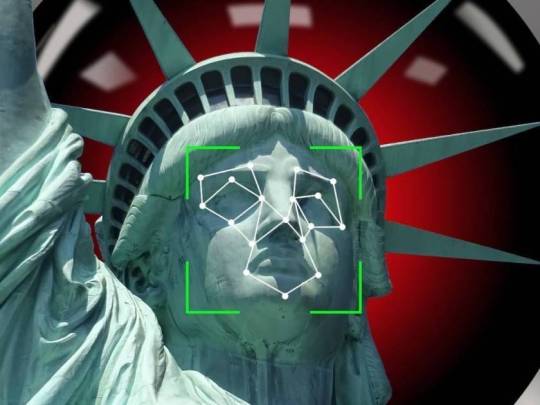
Clearview AI's customer database leaks (permalink)
Clearview is the grifty facial recognition startup that created a database by scraping social media and now offers cops secretive deals on its semi-magic, never-peer-reviewed technology. The company became notorious in January after the NYT did a deep dive into its secretive deals and its weird, Trump-adjascent ex-male-model founder.
(the Times piece was superbly researched but terribly credulous about Clearview's marketing claims)
https://www.nytimes.com/2020/01/18/technology/clearview-privacy-facial-recognition.html
Yesterday, Clearview warned its customers that it had been hacked and lost its customer database. Today, that customer database was published.
https://www.buzzfeednews.com/article/ryanmac/clearview-ai-fbi-ice-global-law-enforcement
It seems that the NYT weren't the only ones to take Clearview's marketing claims at face value. Its client list includes the DoJ, ICE, Macy's, Walmart, and the NBA. All in all the dump includes more than 2,200 users, including "law enforcement agencies, companies, and individuals around the world."
Included: state AGs, university rent-a-cops, and clients in Saudi Arabia.
"BuzzFeed News authenticated the logs, which list about 2,900 institutions and include details such as the number of log-ins, the number of searches, and the date of the last search."
What does Clearview, a sercurity company, say about this ghastly security breach? "Unfortunately, data breaches are part of life in the 21st century."
Big shrug energy.
"Government agents should not be running our faces against a shadily assembled database of billions of our photos in secret and with no safeguards against abuse," ACLU attorney Nathan Freed Wessler, said to BuzzFeed News.
It is amazing that this needs to be said.
"More than 50 educational institutions across 24 states named in the log. Among them are two high schools."
They are:
Central Montco Technical High School in Pennsylvania
Somerset Berkley Regional High School in Massachusetts
The log also has an entry for Interpol.
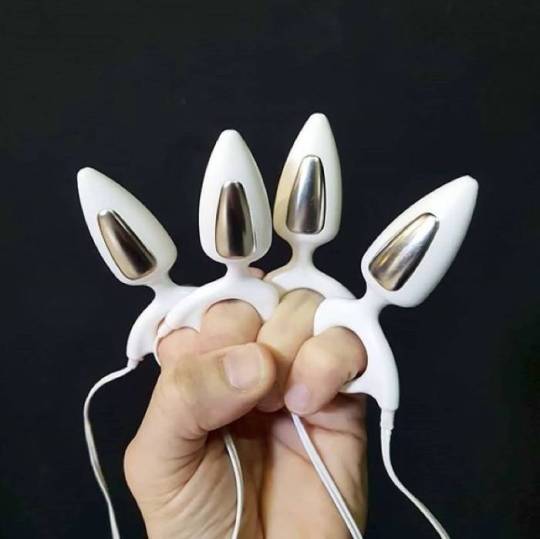
The Internet of Anal Things (permalink)
In 1994, the notorious/celebrated electronic artist Stelarc did a performance called "Amplified Body" in which he "controlled robots, cameras and other instruments by tensing and releasing his muscles"
https://web.archive.org/web/20120712181429/https://v2.nl/events/amplified-body
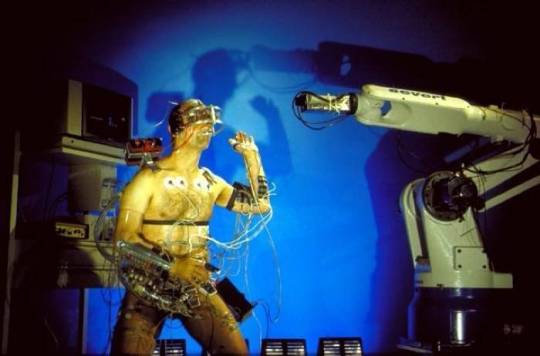
Now, artist/critic Dani Ploeger has revisited Amplified Body with his own performance, which is very similar to Stelarc's, except all the peripherals are controlled by Ploeger tensing and releasing his anal sphincters around a smart butt-plug.
https://www.daniploeger.org/amplified-body
He calls it "B-hind" and it's a ha-ha-only-serious. The buttplug is "an anal electrode with EMG sensor for domestic treatment of faecal incontinence," and the accompanying text is a kind of art-speak parody of IoT biz-speak.
https://we-make-money-not-art.com/b-hind-celebrating-the-internet-of-anal-things
"B-hind offers a unique IoT solution to fully integrate your sphincter muscle in everyday living. The revolutionary anal electrode-powered interface system replaces conventional hand/voice-based interaction, enabling advanced digital control rooted in your body's interior. Celebrating the abject and the grotesque, B‒hind facilitates simple, plug-and-play access to a holistic body experience in the age of networked society."
B-hind was produced in collaboration with V2_, the Lab for the Unstable Media in Rotterdam, and In4Art.

Oakland's vintage Space Burger/Giant Burger building needs a home! (permalink)
Giant Burger was once an East Bay institution, known for its burgers and its gorgeous googie architecture.
https://localwiki.org/oakland/Giant_Burger
One of the very last Giant Burger buildings is now under threat. Though the Telegraph Ave location was rescued in 2015 and converted to a "Space Burger," it's now seeking a new home because it is in the path of the Eastline project.
https://insidescoopsf.sfgate.com/blog/2015/02/24/space-burger-launches-in-uptown-oakland/
The Oakland Heritage Alliance is hoping someone will rescue and move the building: " Do you have an idea for a new location for this mid-century icon? Please contact [email protected] if you know of an appropriate lot, project, or site, preferably downtown."
(Image CC BY-SA, Our Oakland)

Fan-made reproduction of the Tower of Terror (permalink)
Orangele set out to re-create the Walt Disney World Twilight Zone Tower of Terror elevator loading zone in the entry area to their home theater. He's not only done an impressive re-make of the set, but he's also augmented it with FANTASTIC gimmicks.
https://www.hometheaterforum.com/community/threads/the-tower-of-terror-theater.365747/
It's not merely that's he's created a rain, thunder and lightning effect outside the patio doors…
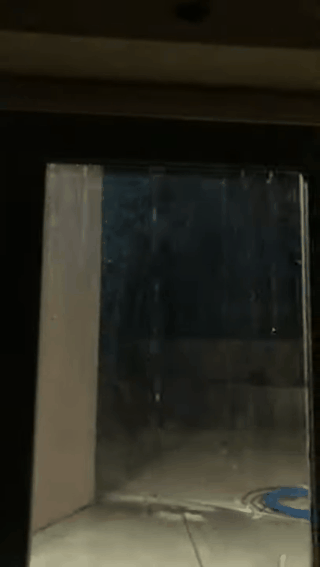
https://www.youtube.com/watch?v=4QMzN0v4mJQ
Nor has he merely created props like this gimmicked side table that flips over at the press of a button.
https://www.youtube.com/watch?v=kY7gQLMnbeA
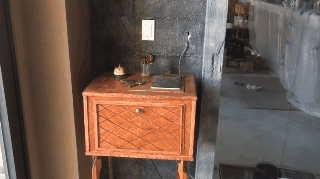
He's also created HIS OWN ROD SERLING DEEPFAKE.
https://www.youtube.com/watch?time_continue=2&v=MIsjYJwOXSU
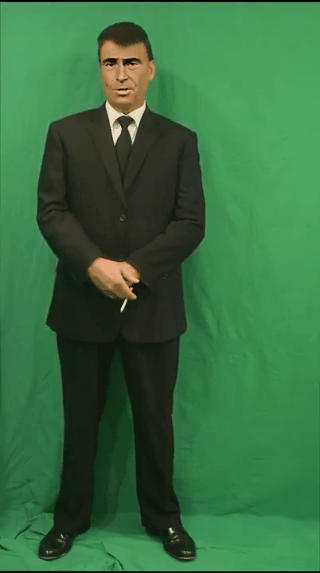
I kinda seriously love that he left Rod's cigarette in. The Disney version looks…uncanny.
Not shown: "exploding fuse box with simulated smoke and fire, motorized lighted elevator dial, motorized/lighted pressure gauge, video monitor playing Tower of Terror ride sequence seen through the elevator door wrap, motorized "elevator door'"
He notes, "I was once married, but now as a single person, I can do whatever I want, haha. NEVER getting married again."

Drawing the Simpsons with pure CSS (permalink)
Implementing animated Simpsons illustrations in CSS isn't the most practical web-coding demo I've seen, but it's among the most impressive. Bravo, Chris Pattle!
(not shown: the eyes animate and blink!)
https://pattle.github.io/simpsons-in-css/
#bart .head .hair1 { top: 22px; left: 0px; width: 6px; height: 7px; -webkit-transform: rotate(-22deg) skew(-7deg, 51deg); -ms-transform: rotate(-22deg) skew(-7deg, 51deg); transform: rotate(-22deg) skew(-7deg, 51deg); }
I especially love the quick-reference buttons to see the raw CSS. It reminds me of nothing so much as the incredibly complex Logo programs I used to write on my Apple ][+ in the 1980s, drawing very complicated, vector-based sprites and glyphs.
https://github.com/pattle/simpsons-in-css/blob/master/css/bart.css
Most interesting is the way that this modular approach to graphics allows for this kind of simple, in-browser transformation.

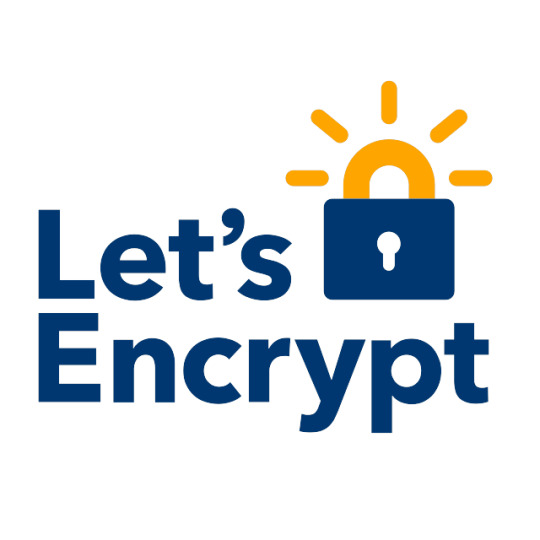
Let's Encrypt issues its billionth cert (permalink)
When the AT&T whistleblower Mark Klein walked into EFF's offices in 2005 to reveal that his employers had ordered him to help the NSA spy on the entire internet, it was a bombshell.
https://www.eff.org/tags/mark-klein
The Snowden papers revealed the scope of the surveillance in fine and alarming detail. According to his memoir, Snowden was motivated to blow the whistle when he witnessed then-NSA Director James Clapper lie to Senator Ron Wyden about the Klein matter.
Since that day in 2005, privacy advocates have been fretting about just how EASY it was to spy on the whole internet. So much of that was down to the fact that the net wasn't encrypted by default.
This was especially keen for @EFF. After all, we made our bones by suing the NSA in the 90s and winning the right for civilians to access working cryptography (we did it by establishing that "Code is speech" for the purposes of the First Amendment).
https://www.eff.org/deeplinks/2015/04/remembering-case-established-code-speech
Crypto had been legal since 1992, but by Klein's 2005 disclosures, it was still a rarity. 8 years later — at the Snowden moment — the web was STILL mostly plaintext. How could we encrypt the web to save it from mass surveillance?
So in 2014, we joined forces with Mozilla, the University of Michigan and Akamai to create Let's Encrypt, a project to give anyone and everyone free TLS certificates, the key component needed to encrypt the requests your web-server exchanges with your readers.
https://en.wikipedia.org/wiki/Let%27s_Encrypt
Encrypting the web was an uphill climb: by 2017, Let's Encrypt had issued 100m certificates, tipping the web over so that the majority of traffic (58%) was encrypted. Today, Let's Encrypt has issued ONE BILLION certs, and 81% of pageloads use HTTPS (in the USA, it's 91%)! This is astonishing, bordering on miraculous. If this had been the situation back in 2005, there would have been no NSA mass surveillance.
Even more astonishing: there are only 11 full-timers on the Let's Encrypt team, plus a few outside contractors and part-timers. A group of people who could fit in a minibus managed to encrypt virtually the entire internet.
https://letsencrypt.org/2020/02/27/one-billion-certs.html
There are lots of reasons to factor technology (and technologists) in any plan for social change, but this illustrates one of the primary tactical considerations. "Architecture is Politics" (as Mitch Kapor said when he co-founded EFF), and the architectural choices that small groups of skilled people make can reach all the way around the world.
This kind of breathtaking power is what inspires so many people to become technologists: the force-multiplier effect of networked code can imbue your work with global salience (for good or ill). It's why we should be so glad of the burgeoning tech and ethics movement, from Tech Won't Build It to the Googler Uprising. And it's especially why we should be excited about the proliferation of open syllabi for teaching tech and ethics.
https://docs.google.com/spreadsheets/d/1jWIrA8jHz5fYAW4h9CkUD8gKS5V98PDJDymRf8d9vKI/edit#gid=0
It's also the reason I'm so humbled and thrilled when I hear from technologists that their path into the field started with my novel Little Brother, whose message isn't "Tech is terrible," but, "This will all be so great, if we don't screw it up."
https://craphound.com/littlebrother
(and I should probably mention here that the third Little Brother book, Attack Surface, comes out in October and explicitly wrestles with the question of ethics, agency, and allyship in tech).
https://us.macmillan.com/books/9781250757531
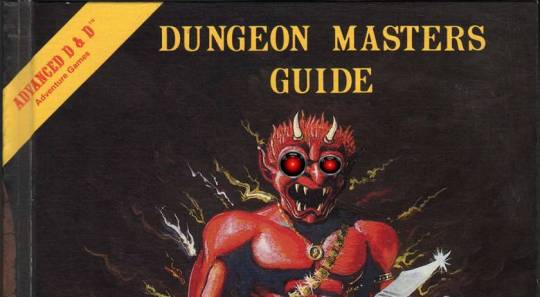
AI Dungeon Master (permalink)
Since 2018, Lara martin has been using machine learning to augment the job of the Dungeon Master, with the goal of someday building a fully autonomous, robotic DM.
https://laramartin.net/
AI Dungeon Master is a blend of ML techniques and "old-fashioned rule-based features" to create a centaur DM that augments a human DM's imagination with the power of ML, natural language processing, and related techniques.
She's co-author of a new paper about the effort, "Story Realization: Expanding Plot Events into Sentences" which "describes a way algorithms to use "events," consisting of a subject, verb, object, and other elements, to make a coherent narrative."
https://aaai.org/Papers/AAAI/2020GB/AAAI-AmmanabroluP.6647.pdf
The system uses training data (plots from Doctor Who, Futurama, and X-Files) to expand text-snippets into plotlines that continue the action. It's a bit of a dancing bear, though, an impressive achievement that's not quite ready for primetime ("We're nowhere close to this being a reality yet").
https://www.wired.com/story/forget-chess-real-challenge-teaching-ai-play-dandd/
This may bring to mind AI Dungeon, the viral GPT-2-generated dungeon crawler from December.
https://aidungeon.io/
As Will Knight writes, "Playing AI Dungeon often feels more like a maddening improv session than a text adventure."
Knight proposes that "AI DM" might be the next big symbolic challenge for machine learning, the 2020s equivalent to "AI Go player" or "AI chess master."

How to lie with (coronavirus) maps (permalink)
The media around the coronavirus outbreak is like a masterclass in the classic "How to Lie With Maps."
https://www.press.uchicago.edu/ucp/books/book/chicago/H/bo27400568.html
Self-described "cartonerd" Kenneth Field's prescriptions for mapmakers wanting to illustrate the spread of coronavirus is a superb read about data visualization, responsibility, and clarity.
https://www.esri.com/arcgis-blog/products/product/mapping/mapping-coronavirus-responsibly/
Both of these images are representing the same data. Look at the map and you might get the impression that coronavirus infections are at high levels across all of China's provinces. Look at the bar-chart and you'll see that it's almost entire Hubei.

Here's a proposed way to represent the same data on a map without misleading people.

Another point that jumped out: stop coloring maps in red!
"We're mapping a human health tragedy that may get way worse before it subsides. Do we really want the map to be screaming bright red? Red can connotate death, still statistically extremely rare for coronavirus."
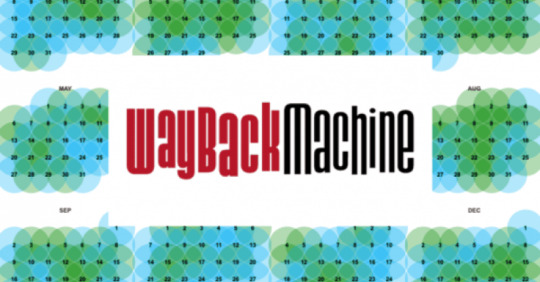
This day in history (permalink)
#5yrsago Ad-hoc museums of a failing utopia: photos of Soviet shop-windows https://boingboing.net/2015/02/28/ad-hoc-museums-of-a-failing-ut.html
#5yrsago First-hand reports of torture from Homan Square, Chicago PD's "black site" https://www.theguardian.com/us-news/2015/feb/27/chicago-abusive-confinment-homan-square
#1yrago EFF's roadmap for a 21st Century antitrust doctrine https://www.eff.org/deeplinks/2019/02/antitrust-enforcement-needs-evolve-21st-century
#1yrago Yet another study shows that the most effective "anti-piracy" strategy is good products at a fair price https://www.vice.com/en_us/article/3kg7pv/studies-keep-showing-that-the-best-way-to-stop-piracy-is-to-offer-cheaper-better-alternatives
#1yrago London's awful estate agents are cratering, warning of a "prolonged downturn" in the housing market https://www.bbc.com/news/business-47389160
#1yrago Bad security design made it easy to spy on video from Ring doorbells and insert fake video into their feeds https://web.archive.org/web/20190411195308/https://dojo.bullguard.com/dojo-by-bullguard/blog/ring/
#1yrago Amazon killed Seattle's homelessness-relief tax by threatening not to move into a massive new building, then they canceled the move anyway https://www.seattletimes.com/business/amazon/huge-downtown-seattle-office-space-that-amazon-had-leased-is-reportedly-put-on-market/
#1yrago The "Reputation Management" industry continues to depend on forged legal documents https://www.techdirt.com/articles/20190216/15544941616/pissed-consumer-exposes-new-york-luxury-car-dealers-use-bogus-notarized-letters-to-remove-critical-reviews.shtml

Colophon (permalink)
Today's top sources: Allegra of Oakland Heritage Alliance, Waxy (https://waxy.org/), We Make Money Not Art (https://we-make-money-not-art.com/), Sam Posten (https://twitter.com/Navesink), Slashdot (https://slashdot.org), Kottke (https://kottke.org) and Four Short Links (https://www.oreilly.com/feed/four-short-links).
Hugo nominators! My story "Unauthorized Bread" is eligible in the Novella category and you can read it free on Ars Technica: https://arstechnica.com/gaming/2020/01/unauthorized-bread-a-near-future-tale-of-refugees-and-sinister-iot-appliances/
Upcoming appearances:
Canada Reads Kelowna: March 5, 6PM, Kelowna Library, 1380 Ellis Street, with CBC's Sarah Penton https://www.eventbrite.ca/e/cbc-radio-presents-in-conversation-with-cory-doctorow-tickets-96154415445
Currently writing: I just finished a short story, "The Canadian Miracle," for MIT Tech Review. It's a story set in the world of my next novel, "The Lost Cause," a post-GND novel about truth and reconciliation. I'm getting geared up to start work on the novel now, though the timing is going to depend on another pending commission (I've been solicited by an NGO) to write a short story set in the world's prehistory.
Currently reading: Just started Lauren Beukes's forthcoming Afterland: it's Y the Last Man plus plus, and two chapters in, it's amazeballs. Last week, I finished Andrea Bernstein's "American Oligarchs" this week; it's a magnificent history of the Kushner and Trump families, showing how they cheated, stole and lied their way into power. I'm getting really into Anna Weiner's memoir about tech, "Uncanny Valley." I just loaded Matt Stoller's "Goliath" onto my underwater MP3 player and I'm listening to it as I swim laps.
Latest podcast: Gopher: When Adversarial Interoperability Burrowed Under the Gatekeepers' Fortresses: https://craphound.com/podcast/2020/02/24/gopher-when-adversarial-interoperability-burrowed-under-the-gatekeepers-fortresses/
Upcoming books: "Poesy the Monster Slayer" (Jul 2020), a picture book about monsters, bedtime, gender, and kicking ass. Pre-order here: https://us.macmillan.com/books/9781626723627?utm_source=socialmedia&utm_medium=socialpost&utm_term=na-poesycorypreorder&utm_content=na-preorder-buynow&utm_campaign=9781626723627
(we're having a launch for it in Burbank on July 11 at Dark Delicacies and you can get me AND Poesy to sign it and Dark Del will ship it to the monster kids in your life in time for the release date).
"Attack Surface": The third Little Brother book, Oct 20, 2020.
"Little Brother/Homeland": A reissue omnibus edition with a very special, s00per s33kr1t intro.
7 notes
·
View notes
Text
Cervical Spondylosis & How Physiotherapy Can Help

Introduction:
Cervical spondylosis is a condition that causes degeneration of vertebrae, discs, and ligaments in the neck of cervical spine. The cervical spine refers to seven small vertebrae that form the neck. They start at the base of skull.
In cervical spondylosis, the edges of vertebrae often develop spurs called osteophytes and there is involvement of adjacent soft tissue structures. Over time, the disc gets thinner and their ability to absorb shock is lost, increasing the risk of symptoms.
Swollen neck joints, called facet joints, can press or pinch nearby nerve roots or the spinal cord itself, resulting in tingling in extremities and sometimes even pain in limbs.
Nearly 85% of the people over the age of 60 years live with cervical spondylosis, but not all of them experience pain. Symptoms: Most people with cervical spondylosis don’t have significant symptoms. If present, symptoms can vary from mild to severe, and may develop gradually or suddenly. Some common symptoms are:· Pain around shoulder blade or along the arm and in fingers. Pain may increase when Standing, Sitting, Sneezing, Coughing, Tilting· Muscle weakness, makes it hard to lift the arms and hold objects firmly.· Headache that mostly occurs in the back of head. Tingling and numbness mainly in shoulders and arms, can affect legs as well.· Loss of balance and a loss of bladder or bowel are less frequent symptoms which need immediate medical attention. Diagnosis: Making a diagnosis of cervical spondylosis involves ruling out of other potential conditions like fibromyalgia. Also involves testing for movement and determining the affected nerve, muscle and bone. Physical examination: It includes testing of reflexes, checking for muscle weakness or sensory deficit, and testing the range of motion of neck. Imaging testsX- rays can be used to check for bone spurs and other abnormalities.A CT scan can provide more detailed images of neck.An MRI scan helps to locate pinched nerves.In a myelogram, dye is used which along with CT gives a more detailed image.An electromyogram EMG) is used to check that the nerves are functioning normally when sending signal to muscles. Treatment: Treatment of cervical spondylosis focuses on relieving pain and lowering the risk of permanent damage. Non-surgical methods are very effective. Medications: Muscle relaxants such as cyclobenzaprine to treat muscle spasms.Narcotics such as hydrocodone for pain relief.Anti- epileptic drug such as gabapentin to relieve pain caused by nerve damageSteroid injection like Prednisone to reduce the tissue inflammation and relieve pain.Non steroid anti-inflammatory drugs (NSAIDs) like diclofenac to relieve pain. Physical Therapy Treatment Treatment should be individualized but generally includes rehabilitation exercises, proprioceptive re-education, manual therapy and postural education. Manual therapy: Manual therapy of thoracic spine can be used for reduction of pain, improving function, to increase the range of motion, and to address the thoracic hypomobility. Thrust manipulation: includes technique in a prone supine or sitting position based on therapist’s preference. Also, cervical traction can be used to enlarge the neural foramen and reduce neck stress. Non thrust manipulation: includes posterior anterior (PA) glide planes in prone position. The cervical spine techniques could include retraction, rotation, glides in ULTT1(Upper Limb Tension Test 1) position and PA glides. The technique is choose based on patient’s response. Postural education: includes the alignment of supine during sitting and standing activities.Soft tissue mobilization: is performed on the muscles of upper quarter with the involvement of upper extremity positioned in abduction. Thermal therapy: provides symptomatic relief only. Cervical traction: is incorporated in patients experiencing radicular pain. It is done to alleviate the nerve roots compression that occurs with foraminal stenosis. For more Read visit at https://cbphysiotherapy.in/blog/cervical-spondylosis-how-physiotherapy-can-help
1 note
·
View note
Text
Stuff & Things
It’s been about 6 months since I’ve had a computer, about a year since I’ve had a good computer, and typing on my phone in any significant amount is obnoxious so... a lot has happened that’s not made it’s way here. (Read more below the cut.)
First, we’ve finally moved with the help of a dear friend! Into a townhouse closer to The City. Two stories rather than one has been an adjustment, but The Kid loves it. We’ve an impossible amount of Things and Stuff we’ll have to slowly widdle down to a more reasonable amount because this place is smaller than the last (2 bd, 1.5 bath vs 3 bd, 2 bath w/ garage), and that’s what occupies most of my time atm. Unpacking + sorting + balancing health. We’ve already donated so, so much to charity. There’s still a lot to go. The neighborhood is nice, there’s a park a block away near a creek and lots of green space and wildlife (there is a toad? who lives beneath our kitchen window?!). There’s also a library right beside the park! Best is that The Kid gets to stay in his old school (finding a place in his district was paramount), where he’s thriving academically, and even gets to keep the same morning bus driver which made the transition a little easier. Though half-days for teacher conferences and then a week off for Thanksgiving immediately after we moved did not. There are some drawbacks, a few things we didn’t realize before signing the lease that are kinda meh (like the living room layout has no place for a tv???), and it’s really really very cold (large single pane windows throughout), but altogether I’m glad to have relocated in general. We’ll improvise, and throw some curtains at it. And now for something completely different a health update! So after suffering for years with neck/shoulder/migraine pain and being blown off by my old doctor after 6 sessions of physical therapy didn’t work as if there was literally no choices beyond PT, and given a diagnosis of peripheral neuropathy with 0 treatment options by my old-old doctor, my current doctor ordered new x-rays (because so terrible was my old doctor, they wouldn’t even forward over my medical records when asked by my new physician’s office) which revealed A Problem. My old doctor had also ordered x-rays but reacted as if they were fine? Essentially prescribed physical therapy and spoke no more of it. But it’s not even a small problem. It’s a pretty big one? One that should have been caught sooner and actually treated? Like. A not insignificant part of my present day constant pain might have been avoided? At least lessened? Backstory time. My old-old doctor was also bad (not an uncommon experience for women, sadly) and when I first presented with neurological symptoms of “my hands and feet are always cold, even when they are not cold to the touch, they feel like they are always in ice water” in like 1999 I was basically told I was probably just cold. It physically hurt all of the time but once a doctor said it was nothing, everyone just insisted it must actually be nothing. Like, I wasn’t an adult yet, and my distress about the problem was definitely downplayed because of my age. Young people are too young to have medical problems! Duh. Fast forward a decade and by then my hands and feet mostly felt numb, but sometimes painfully cold because it felt like frostbite if I felt anything at all. About once a year I’d get this intense pain in my neck/shoulders but by the time I could actually get in to my doctor’s office it was “better.” My doctor referred me for the nerve conduction test (EMG) after my insistence (this is a painful test in which needles and inserted into your skin and electricity is passed through them and measured, essentially). When I showed up for the EMG at the hospital, I was asked why someone my age needed an EMG. I said that my hands and feet felt cold and/or numb regardless of temperature. They had me stand in a bucket of hot hot hot water for 10 minutes to “warm up” my feet. After 10 minutes, they were still cold to the touch. “Well, it’s winter, so...” I argued it was like that regardless of season but it wasn’t taken seriously. Everyone thought the EMG results would come back normal. But they didn’t. I was diagnosed with peripheral neuropathy in my hands AND my feet after the EMG showed moderate to significant delays between the signals sent from my hands/feet to my brain and back. They wanted a follow-up but so casual about the problem were they, that it wasn’t going to be scheduled for a year out. I had shit to do, man. A life to live. Then I moved 3000 miles away and got an even worse doctor through my shifty insurance, which I didn’t realize at first because they at least prescribed me something for the previous diagnosis. Even after the diagnosis my old-old doctor offered no solutions. The nerve damage was done, oh well I guess. But the offered treatment was only helping one facet of a multifaceted problem and I found myself being blown-off again. “It sometimes feels like my bones are grinding.” No one listens. So what is happening? Well. Sometimes my bones are grinding! Specifically my spine. I could tell bone pain from muscle pain. Wild fucking concept, I know. But wait, there’s more! Basically the entirety of my cervical vertebrae are fucked, fun! And the fuckening has been progressive and ongoing, all this time. c6-c7 is particularly Fucked with a capital F. We’re talking bone spurs and herniated discs and pinched nerves, we’re talking degenerative, untreated spinal arthritis. We’re talking neurosurgeons and spinal surgery. Which yeah, is gd whacky in a person my age even now, but probably began nearly 2 decades ago, when I first said, “I don’t feel so well. It’s almost as if my bones are grinding against each other and causing nerve damage or something but idk I just live in here.” If they do nothing, it’ll just continue getting worse and I’ll probably experience paralysis. So, beginning of January I go in for a Cervical Medial Branch Block. Then we go from there. My medical team doesn’t want to be spooky but treating this conservatively isn’t really an option anymore, since every doctor up until now has been wildly negligent in my care. It should have been treated conservatively in 1999. We’re way beyond that now. Also, as you’ve undoubtedly seen, heart monitoring! I had an electro that revealed right-axis deviation (not uncommon in people with sleep apnea, but not healthy) but otherwise normal readings, followed by an echo which revealed 3 of 4 valves are leaky but not dangerously so and there’s no malformations as far as they could see (apparently I have obfuscation tits) so they wanted a 48 hours nonstop electro performed with a mobile monitoring system. Results of that will be in in 7-14 days. I suspect it’ll be mostly an uneventful read but they’ll find “something” when I sleep (common in sleep apnea) and something that comes at random during waking hours (sometimes my heart just gets excited like a dog who heard the word “walk” even though no leash is present). In any case, I am confident it’s not life threatening, especially if treated you know, in a timely, reasonable manner.
2 notes
·
View notes
Text
How to Choose the Right Pickups for Your Custom Guitar Build
Guitar Custom Work is becoming increasingly popular, with many enthusiasts opting to build their own guitars from scratch or modify existing ones. One crucial component of any guitar build is the pickups. Pickups are responsible for converting the string vibrations into an electrical signal that can be amplified and shaped into the desired sound. Therefore, selecting the right pickups is crucial to achieving the desired tone and playability of your custom guitar build. In this article, we'll discuss how to choose the right pickups for your custom guitar build.
Consider Your Playing Style
The first thing you need to consider when choosing pickups for your custom guitar build is your playing style. The pickups you choose should complement your playing style and the genre of music you typically play. If you play metal, for example, you'll want pickups that can handle high-gain distortion and produce a clear, articulate sound. On the other hand, if you play jazz, you'll want pickups that are more focused on producing warm, clean tones.
Choose the Right Magnet Type
The magnet type in pickups plays a significant role in shaping the guitar's sound. There are two main types of magnets used in pickups: Alnico and Ceramic. Alnico magnets are known for their warm, vintage sound and are commonly found in vintage-style pickups. Ceramic magnets, on the other hand, are more powerful and produce a brighter, more modern sound. When selecting pickups, you should consider the type of magnet that will work best with your playing style and desired tone.
Pickup Configuration
Another important factor to consider when selecting pickups is the pickup configuration. The configuration refers to the number of pickups and their placement on the guitar. Common configurations include single-coil, humbucker, and P90. Single-coil pickups are known for their bright, clear sound and are commonly found in Stratocasters and Telecasters. Humbucker pickups are known for their warm, thick sound and are commonly found in Les Pauls and other Gibson-style guitars. P90 pickups are a cross between single-coil and humbucker pickups, offering a unique sound that's great for blues and rock.
Consider the Guitar Necks
The type of neck on your guitar can also impact the type of pickups that work best. Bolt-on necks, for example, typically produce a brighter, snappier sound that pairs well with single-coil pickups. Set-neck or neck-through designs, on the other hand, produce a warmer, fuller sound that pairs well with humbucker pickups. Therefore, you should consider the neck design of your guitar when selecting pickups.
Brand and Quality
Finally, it's important to consider the brand and quality of the pickups you choose. Some popular pickup brands include Seymour Duncan, DiMarzio, and EMG, among others. These brands have built a reputation for producing high-quality pickups that deliver exceptional tone and performance. While there are many great brands to choose from, it's important to avoid cheap, low-quality pickups that can negatively impact your guitar's sound and playability.
Conclusion
Choosing the right pickups for your custom guitar build is crucial to achieving the desired sound and playability. When selecting pickups, you should consider your playing style, magnet type, pickup configuration, and the type of neck on your guitar.
If you're looking for high-quality guitar parts and accessories, including pickups and guitar necks, Solo Guitars has you covered. Solo Guitars offers a wide selection of premium guitar parts and accessories that are perfect for custom guitar builds and modifications. Visit their website Solomusicgear.com to learn more!

0 notes
Text
Understanding Basics of Polysomnography and Sleep Testing Billing
Basics of Polysomnography and Sleep Testing About 40 million people in the United States suffer from sleep problems every year. Not getting enough sleep for a long time can cause health problems. Many sleep disorders can be managed by primary care physicians; however, when abnormal sleep patterns are not easily explainable and further evaluation is necessary, expert opinion and sleep studies may be needed. Polysomnography (PSG) refers to the continuous and simultaneous monitoring and recording of various physiological and pathophysiological parameters of sleep furnished in a sleep laboratory facility that includes physician review, interpretation and report. A technologist supervises the recording during sleep time and has the ability to intervene, if needed. The studies are performed to diagnose a variety of sleep disorders and to evaluate a patient’s response to therapies such as continuous positive airway pressure (CPAP). As a primary care physician, to get an accurate reimbursement, lets understand basics of Polysomnography and Sleep Testing billing.
Polysomnography and Sleep Testing Coding Some of the commonly used CPT codes for Polysomnography and Sleep Testing are as mentioned below. These CPT codes are covered by Medicare (with proper documentation), you can check payer specific reimbursement guidelines for exact coverage.
Non-attended sleep studies should be billed with the CPT/HCPCS code that most accurately describes the service. CPT code 95811 alone should be billed for split night studies as CPT code 95811 in this instance is inclusive of CPT code 95810. (Polysomnography; age 6 years or older, sleep staging with 4 or more additional parameters of sleep, attended by a technologist) For a study to be reported as polysomnography (PSG), sleep must be recorded and staged and directly attended by a qualified technologist. Report with modifier 52 if less than 6 hours of recording or in other cases of reduced services. CPT codes 95782, 95783, 95808, 95810, and 95811 include sleep staging. Medicare would not expect to see separate billings for an EEG, EOG, and/or EMG in addition to these codes. CPT code 95808 includes reimbursement for one to three additional parameters. CPT codes 95782, 95783, 95810 and 95811 include four or more additional parameters. Therefore, Medicare would not expect to see separate billings for additional parameters in addition to codes 95782, 95783, 95808, 95810, or 95811. Additional parameters of sleep include: ECG Airflow Ventilation and respiratory effort Gas exchange by oximetry, transcutaneous monitoring or end tidal gas analysis Extremity muscle activity and motor activity movement Extended EEG monitoring Penile tumescence Gastroesophageal reflux Continuous blood pressure monitoring Snoring Body positions Documentation Requirements All documentation must be maintained in the patient’s medical record and made available to the contractor upon request. Every page of the record must be legible and include appropriate patient identification information (e.g., complete name, dates of service[s]). The documentation must include the legible signature of the physician or non-physician practitioner responsible for and providing the care to the patient. The submitted medical record must support the use of the selected ICD-10-CM code(s). The submitted CPT/HCPCS code must describe the service performed. An order from the treating physician/nonphysician practitioner as required by CFR, Title 42, Volume 2, Chapter IV, Part 410.21 (a) Ordering diagnostic tests. When billing for a sleep disorder test, the ordering physician’s NPI must be indicated on the claim form and the order kept on record. Documentation must support that the accreditation, credentialing, and training requirements as stated in the LCD were met for the clinic, technologist, and physician. Applicable CPT Code Group 1 Codes 95782: Polysom <6 yrs 4/> paramtrs 95783: Polysom <6 yrs cpap/bilvl 95807: Sleep study attended 95808: Polysom any age 1-3> param 95810: Polysom 6/> yrs 4/> param Group 2 Codes
95811: Polysom 6/>yrs cpap 4/> parm
Group 3 Codes
95805: Multiple sleep latency test
Group 4 Codes
95800: Slp stdy unattended 95801: Slp stdy unatnd w/anal 95806: Sleep study unatt&resp efft G0398: Home sleep test/type 2 porta G0399: Home sleep test/type 3 porta G0400: Home sleep test/type 4 porta Evaluation and Management (E/M) Codes
Sleep physicians also use Evaluation and Management (E/M) codes to bill for office visits. Evaluation and management codes are restricted to physicians and other qualified advanced nurse practitioners (NPs, PAs, etc.). Technologists cannot bill independently but they can bill incident to the physician (if certain guidelines are followed).
99202: Level 2 new patient office visit 99203: Level 3 new patient office visit 99204: Level 4 new patient office visit 99205: Level 5 new patient office visit 99211: Level 1 established patient office visit 99212: Level 2 established patient office visit 99213: Level 3 established patient office visit 99214: Level 4 established patient office visit 99215: Level 5 established patient office visit Legion Health Care Solutions is a leading medical billing company providing complete billing and coding services to ensure accurate insurance reimbursement for your practice. We shared basics of Polysomnography and Sleep Testing billing for physician reference, for accurate insurance coverage and applicable procedure codes, refer to payer specific billing guidelines and reimbursement policies. To know more about our primary care billing and coding services, contact us at 727-475-1834 or email us at [email protected]
0 notes
Text
Key Factors Aspects of Personal And Organizational Success

Personal and professional success is the accomplishment of a set goal which often leads to a getting on to a higher or a progressive level in ones career. In order to achieve this and arrive at that level, an efficient and consistent access to learning and development opportunities that helps them achieve their aspirations as well as stay updated on the latest trends and technologies should be available.
Organizational learning is the result of an individual attempting to learn new skills in productivity and performance and generally improvise and maximize the benefit to the organization. While on the other hand, if the worker who acquires the new skill does not impart it with others in the organization then that particular skill will not benefit the organization.
Learning new skills together is called as group learning, tis can happen when individuals invest their and time team up with other workers, this coordination enhances to learn as a group. Now this makes each person to perceive himself as a part of the group, and whatever actions the member take up affect the whole group. In which case everyone adds ideas and solutions, and collectively work on the task together, so that the entire team can gain profits from the expertise. This kind of organizational learning can become an excellent learning strategy to ensure a sound knowledge, through the organization.
In other words, these learning groups contribute towards the growth of the organization as a whole. For this kind of total learning, the entire organization as a whole needs to learn and adapt for long-term success. This kind of acquiring skillsets through collective learning gives room for the employees to remain in the same company thereby reducing or eliminating hiring costs. Making use of the new knowledge base, improvised decision-making, increased work efficiency, more disciplined and well planned routines, individuals can transfer their specific knowledge to the organization as a whole.
As the reason organizational learning can be considered and recommended to be practiced as the comprehensive knowledge-sharing structure of an organization, wherein individual employees or a particular group of employees and all the other persons in the company who may be learners can also become great and valuable assets to their respective organizations. Because of the fact that these individuals or groups share their acquired skillsets with the business, which in turn changes its practice and adapt to a changing environment and enhance the businesses to thrive in the long term. EMG is one such institution that guides and undertakes to provide life long learning opportunities to their clients and all who wish to enhance their skill acquiring capacities and prove to become and asset to the company.
To Learn About More Details On Organisational Development Please Come And Visit Our Website..!
#organisational development#learning and development opportunities#Organisational Development Singapore
0 notes